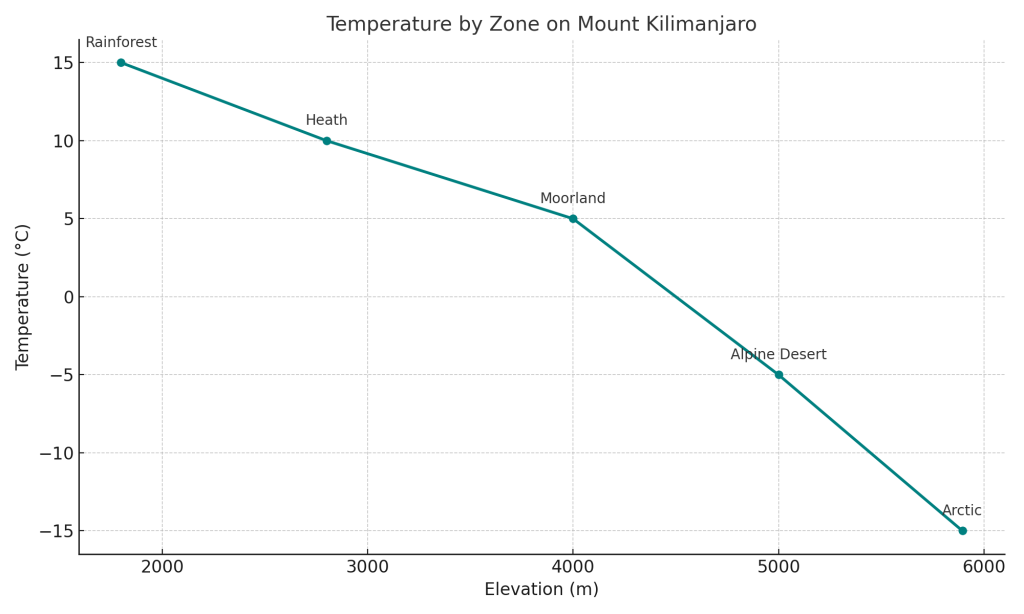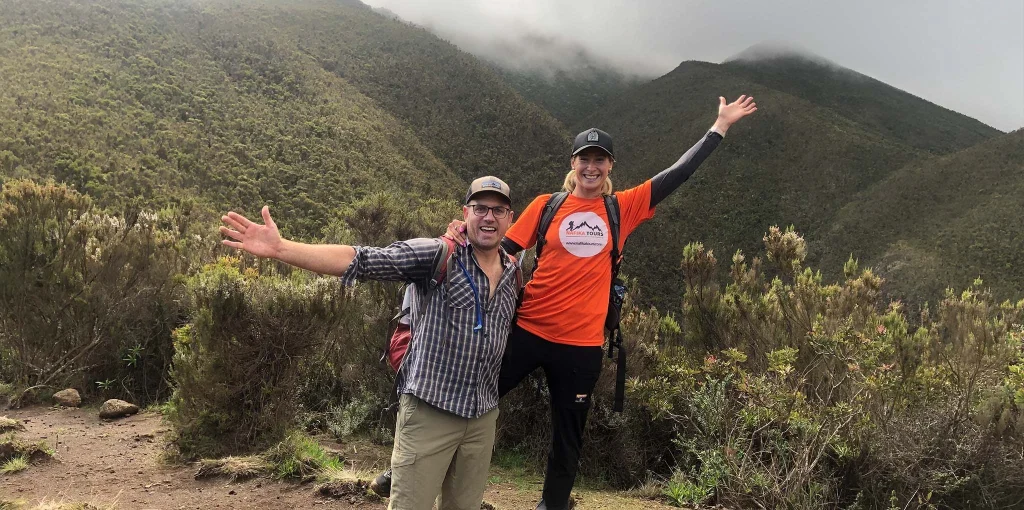Mount Kilimanjaro, the highest peak in Africa, is renowned not only for its breathtaking beauty but also for its diverse climate zones, each offering a unique experience. As you ascend from the base to the summit, you will journey through several distinct climatic regions, each with varying temperatures.

At the lower elevations, the climate is tropical, with temperatures ranging between 20°C to 30°C (68°F to 86°F). This zone is lush with rainforests, teeming with life and providing a warm, humid environment. Hikers should expect warm days, but nights can be cooler, particularly in the rainy season.
As you move higher into the montane forest zone, the temperatures begin to cool. Here, you’ll experience temperatures between 10°C to 25°C (50°F to 77°F). This zone is characterized by dense forests, and while the days can still be warm, the nights are noticeably cooler.
In this zone, the landscape changes dramatically, and the temperatures drop further. Daytime temperatures typically range from 5°C to 15°C (41°F to 59°F), while nights can be quite cold, often falling to around 0°C (32°F) or below. This area is known for its unique flora, including the giant groundsels and lobelias.

The alpine desert is characterized by harsh, dry conditions with large temperature fluctuations. During the day, temperatures can reach up to 10°C (50°F), but at night, they can plummet to as low as -10°C (14°F). The air is thin, and the landscape barren, with little vegetation.
At the summit of Mount Kilimanjaro, temperatures are extremely cold, with nighttime temperatures ranging from -7°C to -29°C (20°F to -20°F). During the day, temperatures may rise slightly but remain well below freezing. The cold, combined with winds and low oxygen levels, makes this part of the climb particularly challenging.

Key Considerations:
Layering: Due to the wide range of temperatures on Kilimanjaro, it’s essential for climbers to dress in layers that can be added or removed throughout the day. We also recommend packing rain gear in your daypack each day to be prepared for sudden weather changes.
Acclimatization: The dramatic changes in altitude and temperature require proper acclimatization to reduce the risk of altitude sickness.
Weather Variability: Weather conditions on Kilimanjaro can be unpredictable, with sudden changes in temperature, particularly at higher elevations, therefore, we strongly recommend that you always come prepared with clothing suitable for sun, wet – rain conditions, and cold nights.
We use international standard equipment, and our guides are trained in first aid and equipped with personal protection gear.
Once a tour is booked, it is guaranteed to operate, even if there is only one client for the entire trip.
Our guides are trained to attend to each client's needs and adjust the program to ensure a personalized experience.
Discover the breathtaking Lemosho Route on Kilimanjaro with Nafika Tours. Enjoy diverse landscapes, fewer crowds, excellent acclimatization, and an unforgettable summit experience.